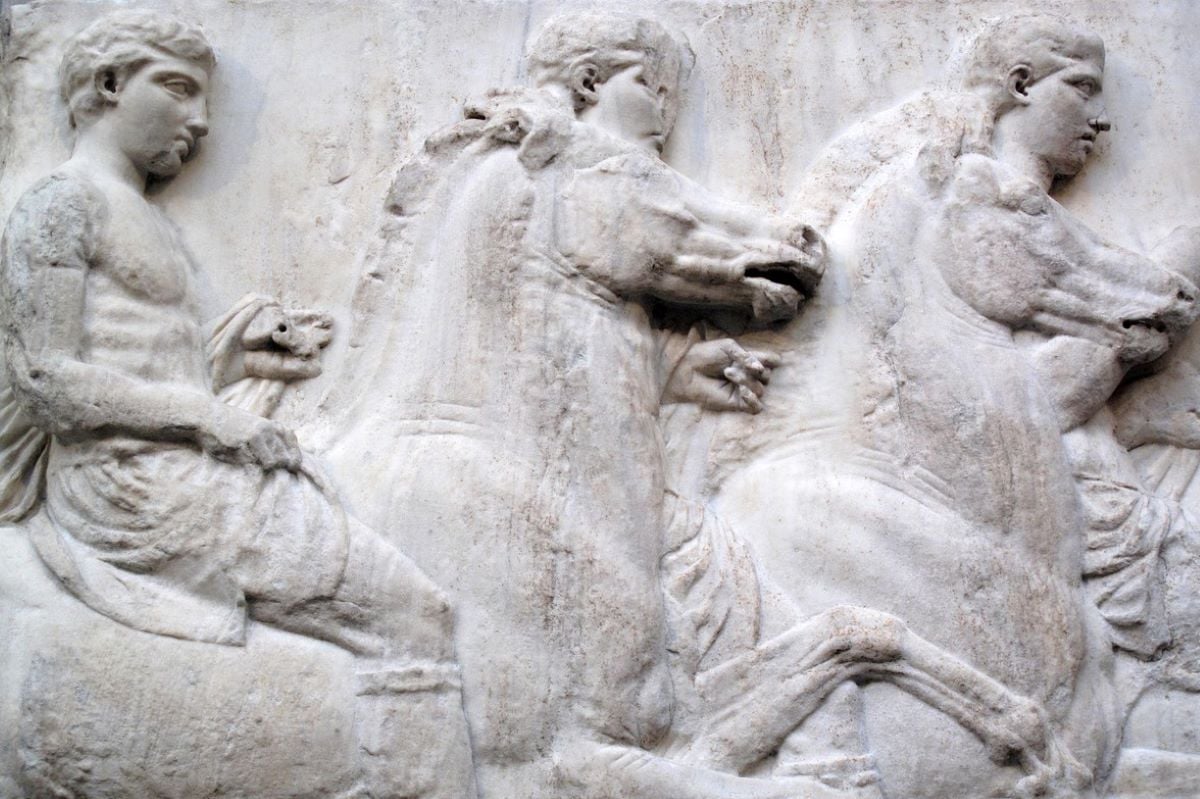
Elgin Marbles
Photo: Tony Baggett
A paradox for George’s marbles
Can a solution be found to the dilemma of the Elgin/Parthenon marbles? asks William Hancock.
George Osborne, Chairman of the British Museum, said on Radio 4’s Today programme in February that he thought the dilemma could be resolved. He is reasonably optimistic the marbles could be seen in London and Athens.
Whereas restitution would require an act of parliament, he thinks the British Museum can try to form a new relationship with Greece: a new arrangement, a new Parthenon partnership.
Michelle Donelan, the most recent former Secretary of State at the DCMS, told Radio 4’s Media Show last month that the marbles belong to the UK. The law prohibits their return and the government have no plans to change the law.
So what is to be done?
The marbles were sold to the nation and vested in the trustees of the British Museum in 1816, by act of parliament, for public use to be ‘preserved and kept together in the said British Museum whole and entire, and distinguished by the Name or Appellation of “The Elgin Collection”’.
The trustees are regulated by the British Museum Act 1963. Section 2 confers general powers ‘to enter into contracts and other agreements, to acquire and hold land and other property, and to do all other things that appear to them necessary or convenient for the purposes of their functions’.
These powers are subject to statutory restrictions and the scope to reach any settlement is constrained by section 3 which requires the marbles be kept in the museum’s authorised repositories, except if they need to be temporarily moved for the purpose of museum administration or care of its collections. They cannot be stored outside Great Britain.
Section 3 also says that such objects cannot be disposed of unless an exception applies. Only one of those exceptions need give us pause here, contained in section 5 sub-section (d).
A disposal is permitted where ‘in the opinion of the Trustees the object is unfit to be retained in the collections of the Museum and can be disposed of without detriment to the interests of students’.
A Parthenon partnership is possible
The Parthenon's frieze, metopes and pediments are supremely fit. The British Museum tells the story of the splendour of all ancient civilisations including Ancient Greek civilisation. Telling those stories is a key purpose of the museum.
George Osborne was asked to clarify whether by ‘seen’ in both places he effectively meant loans, with the marbles residing in London for part of the year – or particular years – and in Athens for part of the time.
A Parthenon partnership is possible if the Greek government will accept a loan to the Acropolis Museum. Section 4 gives the trustees authority to lend ‘for public exhibition (whether in the United Kingdom or elsewhere) any object comprised in the collections of the Museum: Provided that in deciding whether or not to lend any such object … the Trustees shall have regard to the interests of students and other persons visiting the Museum, to the physical condition and degree of rarity of the object in question, and to any risks to which it is likely to be exposed.'
The root of the problem is semantic
But there is a stumbling block. Lord Parkinson, DCMS Under-Secretary of State, called attention to it in the House of Lords’ Parthenon debate in February last year. He said: ‘The British Museum will consider any request for part of its collection to be borrowed, but that requires its legal ownership to be recognised.’
For the Greek government, a loan is out of the question. It does not recognise the British Museum’s ownership. Claims for the return of the marbles date back to Greek Independence in 1832.
The concept of property is controversial for politicians. George Osborne believes that sensible people should come up with something sensible. The root of the problem may lie in the semantics rather than in measures of control. The UK government has no plans to pass an act of parliament, perhaps there is no need.
An expectation that can be met?
Section 10 of the Museum Act 1963 provides for statutory instruments, in effect allowing for alterations to legislation without a new act of parliament. These are needed when the British Museum changes its repositories. For example, in 2021 it added a new site in Reading to its Archaeological Research Collection alongside those in Bloomsbury and elsewhere in London.
The British Museum (Authorised Repositories) Order 2021 was laid under the negative procedure, meaning it became law the day the minister signed the instrument and remains law because neither House of Parliament passed a motion to reject it within 40 days.
There seems no reason in English law why the Acropolis Museum could not be added as an authorised repository of the British Museum. And I presume the British Museum could become an authorised repository of the Acropolis Museum. The Greeks would look left and we would look right.
The concept of the two museums serving as repositories for each other is a suggestion that an Englishman need hardly explain to a Greek. Paradox comes from the Greek “para”, meaning “contrary to”, and “doxa”, meaning expectation. It may be that this is an expectation that can be met.
William Hancock is a Partner at Collyer Bristow LLP.
![]() collyerbristow.com/
collyerbristow.com/
![]() @Collyer_Bristow
@Collyer_Bristow
Join the Discussion
You must be logged in to post a comment.